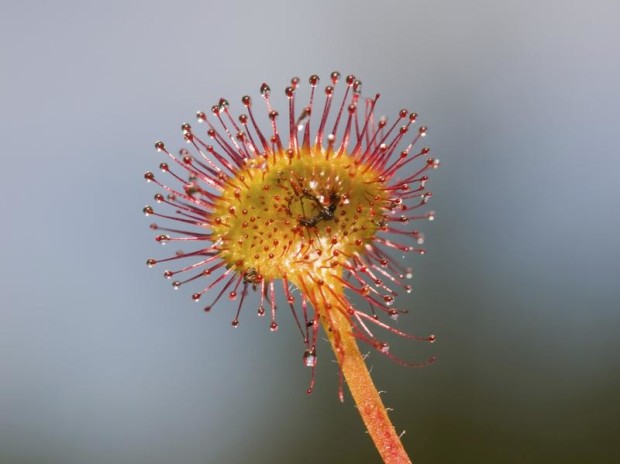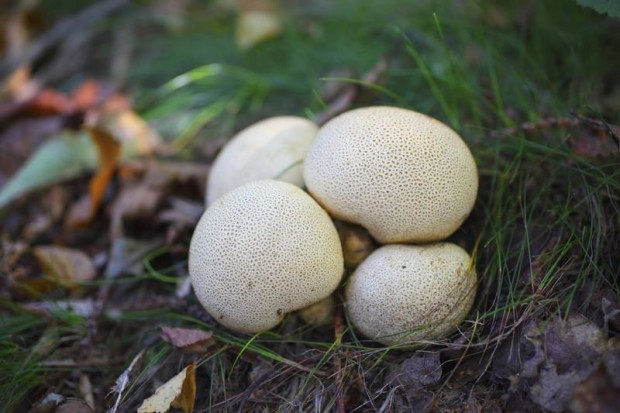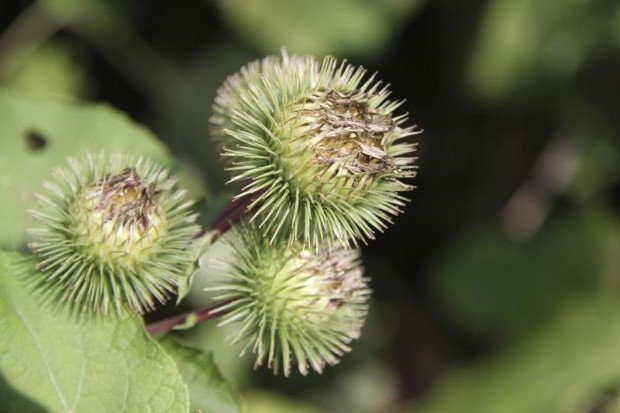We have much more to do and your continued support is needed now more than ever.
Cool Plants for Kids: 8 that Explode, Eat Bugs, or Stick to You
Guest post by Heather Stephenson.
Be Out There is excited to partner with the Appalachian Mountain Club’s Kids Outdoors online community to help more kids and families explore the outdoors! By sharing ideas and resources through guest blogs, we’re working to bring more nature into children’s lives.

Whether on a neighborhood walk or a mountain hike, children often notice and enjoy the local plants. You can expand their horizons—and your own—beyond the usual pine cones and birch bark by learning about these fascinating flora of the Northeast: From exploding puffballs and Velcro-like burdock to carnivorous sundews and pitcher plants, they’re sure to be crowd-pleasers on your next family outing.
“The explosion factor is obviously fun,” says AMC Senior Naturalist Nicky Pizzo, who recommends the following eight plants as favorites from her experience leading schoolchildren on nature walks. “But getting down to their level and looking at anything close up is fun for them—going at their pace, slowing down.”
Go ahead and encourage children to be hands-on, so long as they are not pulling a plant from the ground. “I don’t want kids to take or eat anything,” Pizzo says. “But we want kids to touch things and smell things. It’s that curiosity that makes them want to go back outdoors.”

Puffball
A puffball is a fungus that develops spores (the fungal equivalent of seeds) inside a “fruiting body,” which often looks like a stalkless round mushroom on the forest floor. (The fungus has filaments called hyphae extending underground, but you can’t see the traditional stalk and cap of a mushroom.) When the spores are mature, the ball bursts and clouds of brown, dust-like spores escape. Puffballs explode in response to impacts, like that of falling raindrops.
Kids may want to tap a puffball with a shoe or twig to see if it’s ready to burst. “They’ll puff when they’re at the right stage,” Pizzo says. “If it’s hard, the spores are not ready to be released.” Pizzo warns children to keep their faces at a distance so they won’t inhale the spores if the puffball explodes, but otherwise, she lets them stomp away. “I want kids to touch those,” she says. “You’re not digging up the roots. You’re not doing anything that that plant doesn’t want you to do.” By releasing the spores, you’re just helping to make more puffballs.
Where: Northeastern wooded areas
When: Summer.
Jewelweed
Jewelweed is fun for two reasons: the way the pod pops, and the edible seed inside. The scientific name for this flowering plant, Impatiens (Latin for “impatient”), and a common name for it, “touch-me-not,” both refer to the way the seedpods explode. The mature capsules will burst on contact, sending seeds as much as 10 feet away. Once you learn how to identify this plant confidently and have some fun helping it disperse its seeds, you can also try a taste. After rubbing the outer coating off the seed, you will find “they’re a gorgeous blue color and they taste like almonds,” Pizzo says.
Where: Wet areas near ponds and lakes.
When: Summer.
Beaked hazelnut
The beaked hazelnut is another plant whose interest for kids lies mainly in its seedpod. The pods, which are on the branches by the leaves, look like the heads of birds with long beaks, as the plant’s name suggests. Within each is an edible nut. But be careful: The seedpod’s hairs can prick your fingers. “The first time I saw one, I grabbed it and said ‘Ouch,’” Pizzo recalls. “The shrub itself is pretty unremarkable, but the pods stand out if the shrubs are along the trail. They are beautiful to look at.” Once ripe, the hairs toughen up and no longer stick you if you touch them.
Where: Wet areas near ponds and lakes.
When: Pods ripen in late summer.
Pitcher plants
Carnivorous pitcher plants live in bogs, where they trap and feast on insects. They lure bugs down into deep pools of digestive enzymes within their green, pitcher-shaped leaves. The rim of the pitcher becomes slippery when moistened by dew or nectar, and the inside of the pitcher may contain waxy scales or downward-pointing hairs to ensure that prey cannot climb out.
Kids often enjoy this grisly side of the plant kingdom. If you see a pitcher plant, suggest peering inside.“They might see insects, sometimes frogs,” Pizzo says. “The frogs can get out; they go in to grab the insects that get attracted and caught there.”
Where: Bogs.
When: Spring through fall. They flower in spring.
Sundew
Another carnivorous plant you’ll find in Northeastern bogs is the sundew, a pretty flower that traps hapless creatures using sticky hairs on its leaves, which then curl up. The sticky hairs look like tentacles with glistening drops of dew on their ends, giving the plant its name. Most sundews in the Northeast are small so you have to get down to the level of the plants to see what’s happening, which is perfect for kids.
Where: Bogs.
When: Spring through fall.
Burdock

Burdock is said to be the inspiration for Velcro. A Swiss inventor in the 1940s reportedly became curious about the seeds’ hooking system after taking his dog for a walk and studied it under the microscope. Later, the system was replicated synthetically.
Burdock also makes a memorable appearance in the children’s book Ramona and Her Father, by Beverly Cleary. In the story, Ramona makes a crown of burdock that sticks to her hair so well that her hair has to be cut to get it off. “I wouldn’t recommend putting them in your hair or making a crown of them,” Pizzo says with a laugh.
Where: Fields; you might find these among weeds along the edge of a local baseball field.
When: Late summer.
Beggarticks
Like the burrs of burdock, the burrs of beggarticks hitchhike on animal’s fur and people’s clothing or skin. The scientific name for this plant—Bidens—means “two-tooth,” from the Latin bis “two” and dens “tooth.” The small burr has two sticky points that attach its body to you. Because they are tiny, “all of a sudden you look down and you have 50 of them on your leg,” Pizzo says.
Where: Among weeds in fields
When: Late summer.
Norway maples
For a final recommendation, Pizzo suggests looking for Norway maples, shade trees that are common in the Northeast, although they are considered an invasive species in the White Mountain National Forest where she often works. Norway maples are native to eastern and central Europe and southwestern Asia, but became popular as a street tree in the United States because they are tolerant of poor soil conditions and urban pollution. These trees disperse their seeds in “helicopter” or “whirligig” pods, which are meant to travel. You and your kids can get a lot of mileage out of twirling the winged pods, called samara, and seeing how far they fly. Pizzo also likes to pull a samara apart into its two halves, then split one open with her fingernail. “It splits right down the middle and it’s sticky,” she says. “Naturally you stick it on your nose.”
Where: Around your neighborhood.
When: Summer.
Learn More
Find out more about fascinating flora in these articles:
- Beauty and the Bog
- 7 Bogs to Visit in the Northeast
- Murky and Quirky: Explore these wetlands, where mud and marvelous creatures rule (includes five recommended wetlands—swamps and bogs—to visit)
This article originally appeared on AMC’s Kids Outdoors in September 2013.
Be Out There is NWF’s movement to reconnect American kids with the great outdoors. Visit BeOutThere.org for more outdoor activities and inspirations or sign up for our monthly e-newsletter: www.beoutthere.org/newsletter.




















